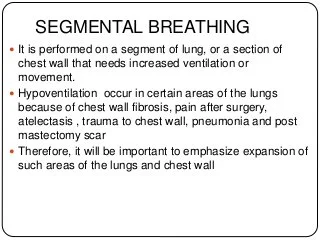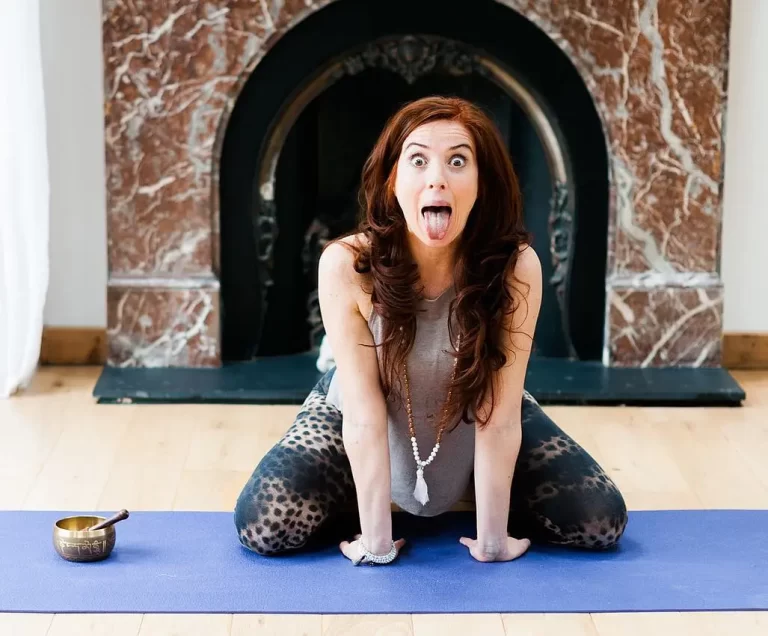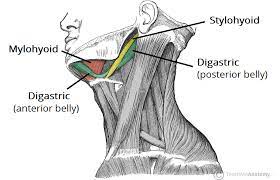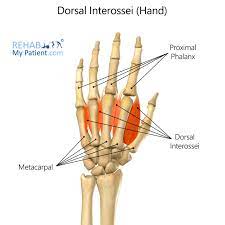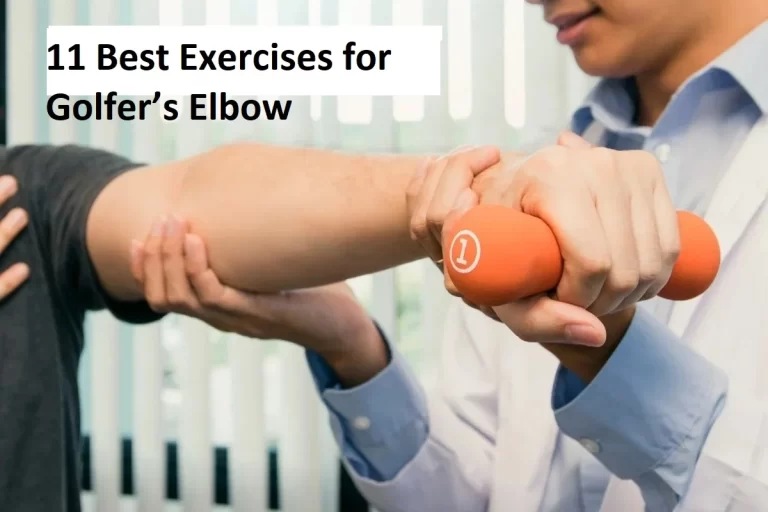11 Best Exercise for Knee Varus Deformity
Table of Contents
Introduction
Targeted exercises can help strengthen the muscles around the knee, improve joint stability, and enhance overall lower limb alignment. In this exercise program, we will explore a range of exercises specifically designed to address knee varus deformity, with the aim of promoting better knee joint function and reducing associated discomfort.
Knee varus deformity is a common orthopedic condition characterized by the inward angling of the lower leg in relation to the thigh. This misalignment of the knee joint can lead to various complications such as joint pain, instability, and increased risk of osteoarthritis. Exercise has been recognized as an important non-surgical intervention to manage knee varus deformity.
This happens when the tibia, the larger bone in the lower leg, rotates inward instead of being aligned with the femur, which is the large bone in your thigh. This causes the knees to rotate outward. The opposite of a varus knee is a light knee that causes some people to pedal. This happens when your tibia rotates outward in relation to your femur. The relationship between the positions of the femur and tibia is called tibiofemoral alignment. Ideally, these two bones should form a 180-degree alignment. If they drop by just a few degrees, you may not notice symptoms for years.
The bearing axis of an ideally placed knee is on a line that runs from the middle of the lower leg through the hip, knee, and ankle. If it is disturbed by a congenital disease, trauma, or other disease, a light or stock deviation may occur. In varus knee alignment, the knees do not bend even though the feet are next to each other. Both conditions increase stress on the knees, which can cause or worsen arthritis.
Surgical correction can help treat deformities. This minimally invasive treatment can rejuvenate your feet. The result of this treatment is, that you will face less pain, have better posture of your knee, and have good knees. We want you to spend more time walking, running, and doing more of the physical activities you enjoy.
Exercises that strengthen the external rotators of the hip have a positive effect on the varus knee. This exercise helps increase hip flexibility and can help minimize lower back pain associated with poor leg placement. stretching and mobility exercises can help decrease the pain caused by this condition. Stretching and strengthening exercises can become prevention for varus condition from the surgery to correct the condition.
Characteristics of Varus Alignment
Varus alignment causes the bearing axis of the foot to shift inward, placing more stress and force on the medial (or inner) section of the knee. This causes the knees to bend outward. Therefore, people with this condition can be called club feet. If you are hunched over, you have a higher risk of developing knee osteoarthritis. when you are obese (overweight) there is a higher chance of developing of knee varus condition. However, you can reduce your risk of knee osteoarthritis by losing weight.
In addition to weight, another factor that increases the risk of knee osteoarthritis is the degree of varus alignment. A higher score (or worse abnormality) means a greater chance of developing knee osteoarthritis. If knee osteoarthritis develops, it is more likely to get worse if you have varus alignment. In varus anomalies, the medial meniscus is affected.
Causes of knee varus deformity
Varus knee is common among newborns. Their knee joints are still developing and many of their bones are still not properly developed. In, some young children occurs of varus knee as a result of some medical condition such as rickets, a disease that lacks or has low levels of vitamin D that causes soft bones.
Other possible causes of varus knee include:
Bone infections
Bone tumors
injuries( Physical trauma)
Paget’s disease of the bone
brittle bone disease
achondroplasia
Blount’s disease
Kidney failure
Fluoride poisoning
Rickets
Leg length discrepancy
Abnormal bone development
Congenital conditions (present at birth)
Fractures that healed improperly
Arthritis, especially rheumatoid arthritis
Symptoms
Knee or hip pain is common to both valgus and varus alignment. So are other symptoms, including:
Difficulty walking or running
Knee instability, patient can feel that the knee joint become twisted and about to “give out”
Reduced range of motion in the hips
bow leg position of the knee with the ankles touching in a standing position;
lower Q-angle;
osteoarthritis (you can feel pain medial aspect of the knee between the patella and femur)
You can feel pain in the medial aspect of the knee
instability—feeling like your knee will “give out”;
Possible low back pain
Benefits of Exercise for Knee Varus Deformity
Exercise is an important part of improving overall health. Bowed legs shouldn’t stop you from exercising. Many people with front feet are able to work and exercise without pain or problems. You can even prevent problems by taking care of your knees and exercising properly. For example, stretching and strengthening your hips and legs will help keep your knees healthy.
Exercise can help control your weight, which can help prevent joint problems. Obesity is an additional risk factor for osteoarthritis of the knee. If you are obese and have front legs, your risk is five times higher than for obese people without front legs.
Forefoot people may need to focus some of their training on improving balance and proprioception, which is the ability to recognize your body’s movements. This can improve your daily activities and can help prevent falls.
Some studies have shown that corrective exercises can reduce the space between the knees while on the feet. You may want to incorporate these corrective exercises into your routine as described below.
Exercise for knee varus deformity
Side leg raise(SLR)

As we mentioned before, hip abduction is a great way to target the gluteus. With these resistance band legs, you will also actively push your thighs to the sides. make sure your whole procedure is right. Place your hands on your hips to feel the muscles working, says Gozo. You can choose to do this exercise standing or lying down, whichever position is more comfortable for you. How to do resistance band pull-ups:
You required a resistance band for this exercise. start with the only normal movement after that you can add the resistance band for the strenghing. Place a resistance band around your ankles and stand with your feet wide apart. Tighten the buttocks and thighs and balance the weight on the right leg, lift the left leg to the side, and tighten the band as much as possible without moving the pelvis. Moving under control, return the left leg to the starting position without letting the foot hit the ground. You can do 10-15 repetitions per session do three sets per day.
Internal Hip Rotation
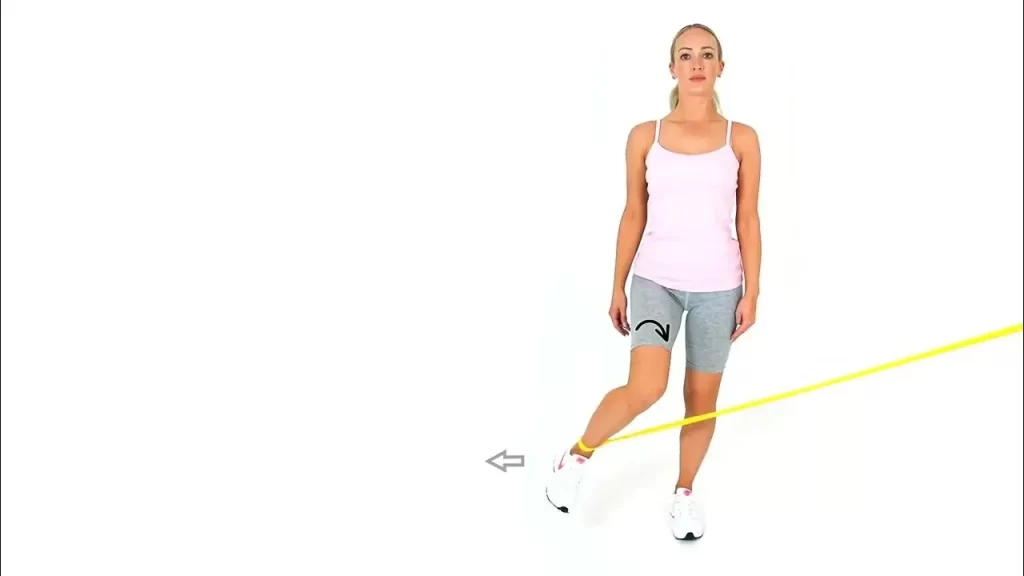
This exercise helps increase hip flexibility and helps improve leg alignment. Some internal hip rotation exercises and stretches can put pressure on your knees. If ever you feel pain in your knee, you should stop. Internal hip rotation is the rotational movement of your thigh inside the hip joint. If you try it standing, your feet should also be turned so that your toes are away from your body. Start in a seated position on the ground with your knees at a 90-degree angle. Place the soles of your feet on the floor at a comfortable width. Extend your left arm behind your body, left palm on the ground. hold your right knee from your right hand. Bend your right leg so that the right toe is pointing up.
This helps protect your knee during internal hip rotation. Keep your hand on your right knee and turn your right inner thigh toward the ground. Your right thigh and right calf should form a right angle as you lower your thigh. You should feel a stretch in the outer and front of your hip. Raise your right leg back to the starting position and repeat the procedure. Do 20 or 30 repetitions, then switch to the left side.
Calf muscle stretch
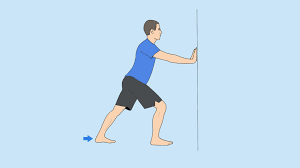
The calf muscle is made up of two muscles the name of the muscle is gastrocnemius and the soleus. These muscles are stretched every day by walking from one place to another or participating in strenuous exercise. Face the wall and stand 12 inches away from it. Extend one leg behind you, keeping both feet on the floor and the back knee straight. Lean against the wall until you feel a stretch in the calf muscle of the outstretched leg. (You can place your hands on the wall for support.)
Hold no more than 30 seconds. Repeat with the other leg. Remember that you should only feel a slight pull when you stretch your calf muscles. If you experience severe pain or discomfort, stop exercising and consult your doctor or physical therapist to make sure you are stretching correctly. You can three times do calf stretches per day. If you feel your calf muscles getting tight, give them a quick stretch to make them looser and more flexible. the calf muscle stretch provides flexibility to your calf muscle and provides the proper alignment and posture to your lower extremity.
Hamstring muscle strech
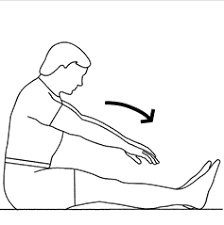
The hamstrings are a group of three muscles that are situated posterior aspect of the thigh. Never stretch when you are in pain or try to force yourself to stretch. Breathe normally while doing strenuous exercises. Try to add pull-ups to your routine at least two or three days a week. Lie on the floor with your back straight and your legs fully extended.
You should also be near the corner of a wall or door for this stretch. Lift your right leg up, keeping the knee slightly bent, and place the heel on the wall. Slowly extend your right leg until you feel a stretch in your hamstring.
Hold for 10 seconds and work for 30 seconds. Repeat with the other leg. Then repeat this stretch a few more times with each leg.
As flexibility increases, try moving closer to the wall for a deeper stretch. There are several exercises and stretches you can do to keep your thighs open. It is good to warm up the muscles before stretching. Try walking or some other activity to warm up your muscles.
Squat
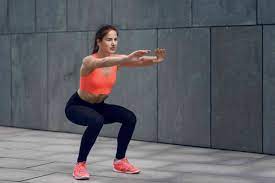
Squats also have the advantage of being one of the most time-efficient movements for shaping and strengthening the entire lower body. Stand with your feet apart, slightly hip-width apart, and place your hands on your hips. Stand tall, gently pull your shoulders back, and gently lift your chest. As you exhale, try to pull your belly button back to engage your deep abdominal muscles, which keep your spine and pelvis stable. Bend your knees keeping your upper body as straight as possible, as if landing on the chair behind you.
It’s okay to let your body bend naturally when squatting, just don’t hunch your chest or roll your shoulders forward. If you’re too upright, your hips won’t release properly and you’ll put too much stress on your knees.
Lower yourself as far as possible, leaning your upper body forward more than a few inches. Go as deep as you comfortably can. If you have knee problems, do not go deeper than a 90-degree angle with your thighs parallel to the floor. Extend your legs, being careful not to lock your knees as you come to a standing position. Repeat three sets of 10-15 repetitions.
While squatting every day probably won’t hurt you (unless you’re doing millions of them and/or you’re not holding heavy weights while squatting), a better goal would be to do three sets of 10-20 squats a day. repetitions at least three times a week. This gives the lower back muscles a good workout and time to recover.
External hip rotation
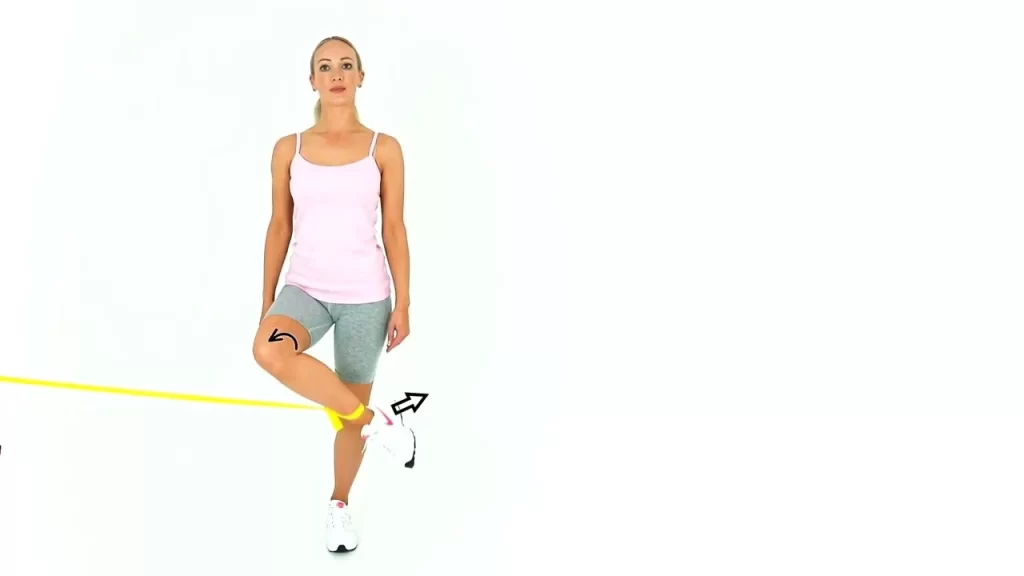
The hip external rotation occurs when the thigh and knee turn outward away from the body. There are various stretches and exercises that help strengthen these muscles and increase flexibility. Keeping the external rotators of the hip strong and flexible can reduce the risk of injury during exercise or daily tasks.
Start the exercise with the supine lying position with both knees in flexion on the floor. Fold the strap in half and place the middle part around the bottom of the right leg.
Pull the strap around the inside of the ankle and out to the outside of the foot. hold the strap with the help of your hand. Here is a video showing how to put the strap on. Raise your right leg with the knee bent at a 90-degree angle so that the lower leg is parallel to the ground. Hold your right knee with your left hand. Straighten your left leg and bend your left leg.
Use the resistance band in your right hand to gently pull your right leg out while holding your right knee directly over your hip with your left hand. You should feel a stretch in your right side hip muscles. If you ever feel pain in your right knee, stop. Hold the movement for about five to ten seconds, then back to the normal movement and do the same on the other side.
Lungus

Lunges are a powerful exercise that allows you to shape and strengthen almost every muscle in your lower body.
Stand in a split stance with your right foot about 2-3 feet in front of your left foot. Your body is straight, your shoulders are back and down, your heart is closed and your hands are resting on your hips. flexion your knees until your lower extremity is a few inches off the ground. At the bottom of the movement, your front thigh is parallel to the ground, your back knee is pointed toward the floor, and your weight is evenly distributed between both legs.
keep your body weight on your front foot and give the pressure back side. Lunges are a multi-joint exercise that helps tone and strengthen many muscles in the lower body. This includes the quads (front of thigh), hamstrings (back of thigh), glutes (butt) and calves (back of thigh). Your hip flexors are tight as you lunge. This improves their flexibility and prevents the shortening and tightening that can occur when you sit for long periods of time.
You’ll also train your core muscles for stability, which helps maintain balance and prevent injury. It’s easy to put too much stress on the knees during a pulse by letting that joint go past the toes. Although your knee may come forward a little, focus on pulling your body down as you squat, instead of pulling it forward. Another important point is to keep the front knee in line with the other toe during the momentum. It can help if you push your hips a little during the movement and check your shape in the mirror.
Other Variations of the Lunge
Assisted Lunge
Half Lunge
Front Foot Elevated Lunge
Dumbbell Lunge
Forward Lunge
Forward Lunge With Reach
Sliding Lunge
slide lunge
Rear Leg Elevated Lunge
Low lunge
Lunge Deadlift
Clamshell exercise
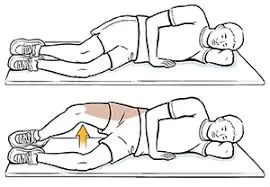
For the shell exercise, start from the side. Lie on your right side, legs, and hips together, knees bent 90 degrees, and head on your right hand. Pull your knees toward the ceiling until your feet, knees, and hips make a clam shape. hold your left hip from your left hand so it doesn’t lean back.
This is your starting point. Only move your knee as much as you can and also maintain the alignment of the whole body. Hold the position for around five seconds, and contract your glutes at the end of the movement before gradually lowering your left knee to the starting position.
You can do 15-20 repetitions per session, then repeat on the other side. To make it more difficult, you can do the Loop resistance band around both thighs, above the knees. Do a few sets of crunches before squats or deadlifts to activate your glutes. This will help ensure that they are engaged and working as a director. As a general exercise, biceps curls can help strengthen the glutes, bringing more strength and stability to the hips. Strong glutes are important for stable hips and protection against lower back and knee injuries. The box is a great way to strengthen these muscles with a nominal risk of injury.
Single leg bridging
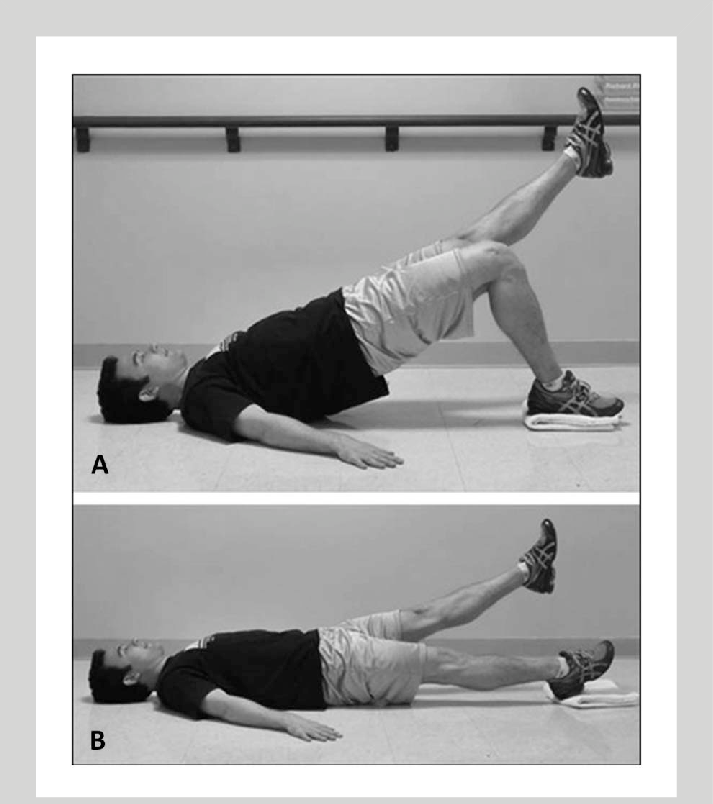
The single-leg bridge exercise provides isolation and strengthens the hip extensors muscle(gluteus and hamstrings). Since this exercise requires no equipment, it is suitable for training the lower body in the gym, or at home. Lie on your back with your arms at your sides, knees bent, and feet on the floor (under the knees). Lift one leg up and fully extend the leg so that it is about 45 degrees to the floor. This is the starting position. Lift your hips, tightening your abs and gluteus to support the lift until your shoulders and knees are straight.
Squeeze your core as you try to pull your belly button back toward your spine. Hold the bridge position for around three seconds then Slowly and controlled lower your hips to the floor, keeping your leg extended to return to the starting position. Repeat with the same leg for the desired number of repetitions. After performing single-leg bridges with one leg up and out, perform this exercise with the other leg to avoid muscle imbalances. This exercise targets the hip extensors. It includes the three gluteal muscles (gluteus maximus, gluteus medius, and gluteus minimus) and the hamstrings. Get it right and you’ll even find it’s a powerful basic core strength.
Seated Groin Stretch
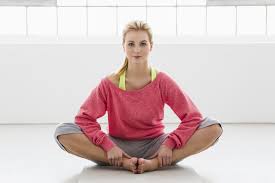
This simple stretch, sometimes called the butterfly stretch, stretches the groin and inner thighs. Here’s how to do it right. Take a sitting position. flexion of your knees and bring your feet together. With the help of hand hold the knee and keep your elbows on your knees. Allow your knees to drop to the ground while keeping your back straight (no arching).
You can lightly press the inner thighs by lightly pressing the knees with your elbows. You should feel a gentle pull and stretch in your groin. Do not bounce (teach the rules of stretching). Do not press down with great force. Hold the stretch for 20-30 seconds.
Release and repeat three times. Increase the stretch by bringing your legs closer to your groin. As you become more flexible, you can extend your hips and back more deeply by bending forward from the waist. do expiration and lean forward, you should keep your back straight. Benefits of this exercise Gluteal and adductor stretches are important for adductor flexibility and range of motion. Good groin and adductor flexibility allows unrestricted and pain-free movement in the inner thigh and lower leg.
Variations of groin stretch
Standing Groin Stretch Exercise
Squatting Groin Stretch
Hip Opener and Groin Stretch
Piriformis muscle stretch
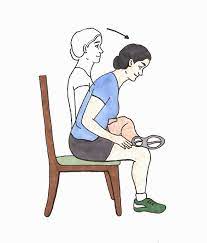
Stretching the piriformis muscle can reduce the tension in the muscle, decrease the discomfort in the lower back, buttocks, and legs, and improve mobility. The piriformis is a flat, pear-shaped muscle located deep in the buttocks and hips. This large muscle runs from the lower back through the glutes to the upper thigh.
It plays an important role in stabilizing the hip joint and externally rotating the thigh, making it essential in daily life and leisure activities. Begin the pear-shaped stretch exercise by sitting in a chair and keeping both feet on the floor. And then lift your right ankle and place it on your left knee. Next, bend your right leg, bringing your toes toward your calf, and sit up tall and straight.
Keep your back straight and lean your chest forward toward your knees. Lean forward enough to feel tension but not discomfort. wait Release the stretch and do with the other leg.
There are other methods of piriformis muscle stretch
Sitting piriformis stretch on the floor
Alternative lying piriformis stretch
Lying piriformis stretch
Pigeon pose
How is it diagnosed?
Your doctor can usually make an initial diagnosis of varus knee by examining your feet and watching how you walk. They may also order an X-ray of the affected leg to get a better look at its bone structure. If your doctor confirms that you have a replacement knee, he or she may also use a tool called a goniometer to measure the degree to which your leg turns outward.
If your child has rickets, the pediatrician may do a test to check their vitamin D levels to rule out rickets.
Exercises for Improving Balance
Studies show that if you have legs, you can have slight imbalances. Therefore, if you want, you can add balance exercises to your exercise routine. 3 Good ideas could be:
One Leg Stand: Stand on one leg
Tandem Stand: Stand with one foot straight in front of the other
BOSU ball training: training on a BOSU balance trainer, on a platform on a round dome
Balance Board or BAPS Board: Stand on wobbly boards to improve your balance
Consult your doctor and physical therapist before beginning an exercise program. They can help ensure that your exercises are safe for you.
Safety Tips
Keeping your knees aligned while exercising will help improve knee alignment and minimize the risk of injury.
Always consult your doctor before beginning an exercise program to determine what activities are best for your individual fitness level. Incorrect exercises or techniques can make the condition worse.
Tips include:
As you run, make sure your knees stay over your toes when you land on both feet.
By squatting, squat down so deep that your hips are below your knees. Keep your knees over your toes.
Wear shoes that provide adequate support. Talk to a shoe specialist or podiatrist to find out what type of shoe or insole is best for foot mechanics.
You may need a prescription for orthopedic use. If you have knee pain or injury, consult your doctor before starting an exercise program.
If you have leg cramps, your doctor can help make sure you’re exercising properly.
A physical therapist (PT) who specializes in exercise and recovery from this painful condition.
Physiotherapists are trained to examine the patient as a whole. They look at how joints and muscles work together. A PT can evaluate your feet and create a safe and effective exercise program for you. They may also suggest changes to avoid pain.
How is it treated?
Treatment for varus knee depends on the cause. If it is due to rickets, your child can simply take vitamin D or calcium supplements if the disease is still in its early stages. Sometimes nutritional supplements are enough to strengthen bones and improve their condition.
Most other causes, including advanced rickets, require surgery. In mild cases that do not cause much pain, physical therapy, and strength training can help strengthen the muscles around the bones in the legs. But they won’t straighten your bones. The most common surgery used to treat knee warts without significant osteoarthritis, especially in younger patients, is a high tibial osteotomy.
This procedure realigns the tibia by cutting and reshaping the bone. This relieves pressure on the knee caused by tibiofemoral movement.
If you have a varus knee, osteotomy surgery can help prevent or at least delay the need for knee surgery altogether. After a high tibial osteotomy procedure, you will need to wait three to eight months before returning to normal activities.
You will also required to wear an orthosis for at least a month or two. If this recovery period seems daunting, remember that total knee replacement surgery, which an osteotomy can sometimes prevent, often requires up to a year of recovery.
Braces and Orthotics
Your healthcare provider may recommend shoe inserts, braces, or knee braces in addition to a customized exercise program.
If you have a forefoot and engage in vigorous activities such as running, you may be a good candidate for orthotics. This is the inner part of the shoe that is specially designed to correct the way you walk.
Corrective braces are more commonly used in bow-legged children who require procedures. These include a modified knee-ankle-foot device that is used both day and night. Corrugated boards are not usually used to repair adult feet. For adults, it is best to consult a doctor or physical therapist. They can advise whether braces will help or make your problem worse.
Recommended activity while the condition
Swimming
Cycling
Rowing
Yoga
Pilates
Tai chi
Not Recommended activity while condition
Running
Soccer
Aerobics
Basketball
Tennis
Volleyball
A Note from the Samarpan Physiotherapy Clinic
If you have knee varus deformity, you can do exercise. You should focus on maintaining a healthy lifestyle and doing exercises that you enjoy. To keep your knees healthy, make sure you focus partly on stretching your lower limbs, strengthening your hips and legs, and improving your balance. If your foot position is on. your feet, you may choose to use orthotics.
Finally, if you are limited by exercise-induced knee pain, non-impact training may be an option. Consult your doctor to start the right exercise program. If you have knee varus deformity you can also wear a comfortable or suitable orthosis for your proper knee and ankle alignment.
FAQ
Bunions (genu varum) are normal in children under 2 years of age, but they usually heal by 3-4 years of age. Some children develop permanent legs due to Blount’s disease or rickets, while adults may develop osteoarthritis of the knee. especially in obesity).
While the benefits of exercise always outweigh the risks, people with flat feet run the risk of further damaging their joints and ligaments if they engage in vigorous activities that put excessive stress on the knees (as well as the hips and ankles).
There are no hard and fast rules, but sports that involve a lot of running and/or jumping and sudden changes of direction should be approached with caution. This includes football, tennis, soccer, volleyball, basketball, and long-distance running.
Smaller exercises that put less stress on the knees, hips, and ankles are ideal for people with front feet. This includes cycling, swimming, rowing, yoga, pilates, rollerblading, tai chi and resistance training.
It might help. Studies have shown that hamstring and hip stretches can build legs permanently and gradually. This includes the thigh, groin, and deep gluteal muscles, which help release tension where ligaments connect to bones. Losing weight also helps.


